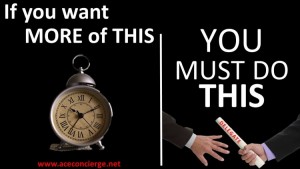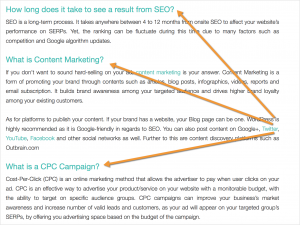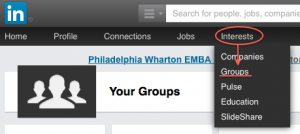Using their Deliverables
Intro: More than just a few good conversations and a slide deck
Consultants can get a bad reputation for good reason. Not everything we do is truly necessary or important, not every prediction we make comes true and not every binder or thumb drive we give you will get used again. Somewhere in between a mea culpa and passing the buck: most of the time something goes wrong on an engagement, it’s a lack of communication between the client and consultant.
As a startup, chances are you don’t have money to throw away playing the telephone game. In part one of this blog, I talked about working together and how to get the most out of an engagement.
This part will focus on the stuff that’s left over once we’ve left the room and how you can make it valuable and relevant immediately. Here are some tips for getting the most out of a consultant’s deliverables:
Have them fill out your deliverables, not theirs
The traditional view of a consulting firm’s work is a three ring binder, thick with unrecognizable charts and supersaturated with marginalia and footnotes. As its plastic covers and metal clasps collect thin coats of dust, the client moves on to another crisis and the consultants wonder why they worked so hard on a paperweight.
Ok, that’s a bit dystopian, but you get the point: our stuff isn’t always used. One way to get around this is to make sure the work a consultant does goes directly into documents you will use for critical business functions. If we’re doing marketing work, let us help you create value props that go straight to your sales team or agency. If we’re doing customer research, add our insights to your investor pitch deck. If we model your product’s success, put it in your financials.
As the client, you own the essence of our work – the insights, data and ideas. Without changing the fundamental meaning of what we’ve delivered, make sure we give you something you can take tomorrow and argue for more support, more funding, more customers. And if you don’t know what those documents look like, back up and have us help you with that.
Chop them up and recompile them as you need
This is a corollary of the “fill out your deliverables, not our deliverables” bit above.
What sort of deliverables are you likely to get from a consultant? Less wordy treatises on the market (that’s what these blogs are for!), more graphical representations of your market, your business model and your go to market strategy. Those pieces are quite useful for a variety of audiences, including investors, potential customers and strategic partners.
A wise presenter and data visualization / design expert named Edward Tuffte told me (and a huge room full of seminar attendees) to read documents like a raider. Take facts, approaches, relevant material and apply it. To hell with the rest.
If you need to put together a sales pitch for a customer, leverage the market research to find valuable competitive positioning. If you need to go into an investor meeting, use that same market research to provide an estimate of the total size of the opportunity, or the trends that authoritative research firms believe will be dominant to show how your solution benefits customers in the new environment.
Don’t feel constrained by the way in which the consultants have ultimately chosen to tell their story.
Learn to fish yourself
As a startup, you’re going to have to learn the mechanics of business, whether you want to or not. An entrepreneur can’t have a business if they don’t incorporate. They won’t have a business for very long if they don’t do their taxes (or work with someone who will make them structure their business on paper). They won’t have a business if they don’t protect their intellectual property, e.g., brand, patents, and trade secrets, through some formal process.
As a business, you won’t be successful in the long run if you aren’t attuned to your market, which is defined by customers, competitors and macroeconomics forces. Market research is an art, but it’s a very teachable art. If you hire outside consultants, insist they walk you through their approaches and how they piece together their recommendations. Then, extend the work they’ve done. Try out their competitive analysis approach on one more competitor. See where that competitor ends up on the landscape you’ve been provided with. (And if a firm doing competitive research doesn’t give you a landscape, fire them.)
One startup I worked with took our entire methodology from a small project a year ago and came back to me with the same charts and curves filled out for their next product. As a consultant, I wasn’t floored they’d done the work we could bill them for, I was ecstatic: we could now do the “next level” with this team because they understood where we were coming from and had given their limited resources a jump start.
Conclusion: Good things come in small packages
You don’t need to spend hundreds of thousands of dollars on a consulting firm to get value from their work. While consulting firms may not be available for true boot-strappers (some firms work for equity, but you don’t really want to give away 10% of your business for a market study, do you?), structuring a tight, focused market or competitive research project can jumpstart your own business’s capabilities, direct you towards the right next investments and make you immediately credible with potential customers and investors.
And if you’re going to go to the trouble of taking on the world’s largest corporations and showing them how poorly they do it and how much better the world can be, it seems worthwhile to make sure your customers can share your vision and support you.
Good luck and get back to work! You don’t have time to read articles like this. Sheesh.
This article was originally published on lenati.com
Business & Finance Articles on Business 2 Community(16)





